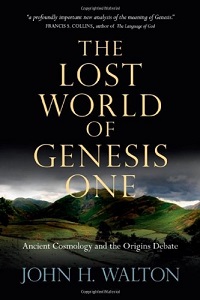Pictured below are rough outlines of how ancient people viewed the cosmos, as based on their own ancient writings and any images they left behind that scholars could examine. The general uniformity of such ancient views has been pointed out by scholars for some time, most recently by Paul Seely here, here, and here.
In 2009 I composed a paper on the topic of “The Cosmology of the Bible” for publication in the book The Christian Delusion. Subsequently, a group of Christians at the blog Triablogue responded to that book and my chapter by composing an ebook that they titled, The Infidel Delusion. And since then another work has appeared on the web, this time by Ben at War on Error in which he defends the consensus view that biblical authors assumed a flat earth.

Benʼs response covers 100 or so questions raised in The Infidel Delusion and on Triablogue by Steve Hays, Paul Manata, and Jason Engwer.
I suggest reading the chapter with which the discussion began, “The Cosmology of the Bible” in The Christian Delusion, before one reads The Infidel Delusion, or Benʼs response to the Infidel Delusion.
My chapter compares ancient Egyptian, Mesopotamian, and Hebrew descriptions of the cosmos, which in all cases was flat with God living overhead (not light-years away). I point to the words and works of leading scholars of ancient Near Eastern cosmologies, and also feature the views of Evangelical Christian scholars who accept the truth of such a consensus such as John Walton who teaches O.T. at Wheaton College and is author of The Lost World of Genesis 1: Ancient Cosmology and the Origins Debate, and a forthcoming tome from Eisenbraunʼs in which he examines biblical cosmology more fully than he has in previous works.
Even Dr. Beale, a defender of biblical inerrancy and professor of N.T. at Westminster Theological Seminary, made the following admission concerning biblical cosmology in his book, The Erosion of Inerrancy in Evangelicalism: Responding to New Challenges to Biblical Authority (Crossway Books, 2008):
“Do certain descriptions of the cosmos reflect only language expressing the ancient mythological worldview, which was built into the substructure of the biblical writers’ thinking through acculturation… ? Perhaps. I have discussed this with some ancient Near East scholars, and the best assessment they give me is that sometimes the cosmological language is purely phenomenological… sometimes it expresses the cosmic temple notion, and sometimes it reflects the socially constructed mythological geographical assumptions and understanding of the parts of the cosmos.” p. 195-196
So, Beale admit that “perhaps” the scholars who study ANE cosmologies are right. He also admits:
“Ancient Near Eastern concepts may have contributed to the theology of sacred space in the building of Israel’s tabernacle and temple. Examples include the eastward orientation, the placement of important cultic objects, the designation of areas of increasing holiness, and the rules for access to the Holy Place and Holy of Holies… circumcision and sacrificial offerings.
“Another option is that biblical writers unconsciously absorbed mythical worldviews about the cosmos, reproduced them in their writings, and believed them to be reliable descriptions of the real world and events occurring in the past real world—creation account, flood narrative, etc.—because they were part of their socially constructed mythological reality. If this is the case, which [I think] is unlikely, it would be impossible not to see ancient Near Eastern myths about the cosmos as inextricably intertwined with Israel’s theology, which would be a very difficult predicament for those [like me] who believe in the inspiration of Scripture.” p.216-217
My chapter focuses on the “very difficult predicament” that Beale is referring to.
If the cosmological assumptions of the authors of the Bible were incorrect, then one may wonder what other assumptions held by biblical authors might also be incorrect.
Is Genesis 1-11 with its tales of creation-flood-tower of Babel, history or myth? What about the last book in the Bible, the book of Revelation? Is it history or myth? Does the Bible begin and end with mythology rather than history?
And what do Christians mean when they say the Bible is “inspired?” Inspired in what way? Are there clear traits or agreed upon boundaries as to how one can determine exactly which writings, past, present and future, are “inspired” or not? And in what ways?
Christians, Jews, Muslims (as well as, conservative, moderate or liberal factions within each religious tradition) interpret verses, chapters, books, letters, even the canon differently. Which way is the “most inspired?”
Or is the “inspiration” of a written document something that can only be seen and acknowledged through the eyes of each discrete theological system of interpretation, which of course disagrees with the next theological system of interpretation?
Addenda
Ben, who composed the Response to Triablogue had this to add after I asked him what he thought each of the Triabloggerʼs believed concerning the question of biblical cosmology:
“It is difficult to tell what Steve Hays really believes about many topics since he is typically too busy incoherently attacking the arguments of his opponent (and attacking his opponent directly) at the expense of being educational about things he knows or things he personally believes. I think weʼd have to be innocent Christian inquirers in order to get that kind of thing out of him. He seems to actually believe that there is a high probability that most ancient people had relatively accurate views about cosmology and that it would be almost impossible for most of them to take seriously any of their primitive imagery used. Jason Engwer seems open to the probability that the consistent use of primitive imagery does indicate that at least some of the Bible authors probably believed in what their imagery implies, but for the sake of the inerrant Bible didnʼt mean it somehow. Thatʼs probably the closest an inerrantist is going to get. Paul Manata doesnʼt comment enough for us to know what he believes. Others from Triablogue did not contribute to TID or post on the topic as far as I know.”
Ben added:
“This is the closest Hays comes to conceding some ground.”
“This is where Engwer gets closest.“
Christian Scholars Who Are Also Theologians And Biologists That Support Evolution Are Gathering Momentum On The Web…
Evolution and Christianity around the Blogosphere. Christians who are also pro-evolution are speaking up on the web more often than ever before.
See also…
5,000 Years of Cosmology in Pictures which draws on the book The Earliest Cosmologies by William F. Warren, which is available on Google Books.
John Waltonʼs Latest Book Is Helping Educate The Next Generation Of Evangelicals
I have already mentioned the Evangelical and O.T. scholar John Walton, who has studied ancient Near Eastern cosmological views, and who teaches at an Evangelical Christian college. But I think it apropos here to add a few paragraphs from Waltonʼs latest work published in 2010 (not the scholarly tome that Eisenbraunʼs is publishing in the near future, but something simpler that Walton wrote in order to help Christian educators teach their pupils about the Bible):
To quote Walton in the above work:
“The Bible tells about creation in relationship to how people thought about their world in ancient times. The ‘waters above’ are not the clouds, mist, and fog, and the ‘firmament’ is not invisible. In the ancient world they believed that the rain was held back by a solid sky.… In the ancient world everyone believed that since water came down (in the various forms of precipitation) there must be water up above the sky. If the water is there and doesnʼt come down all the time, something must hold it up. As a result, everyone in the ancient world believed that the sky was solid and held back heavenly waters.” -- John H. Walton & Kim E. Walton, The Bible Story Handbook: A Resource for Teaching 175 Stories from the Bible (Crossway Books, 2010)
One may also note that the publisher is the same (Crossway Books) in the case of Bealeʼs book, The Erosion of Inerrancy, and in the case of Waltonʼs book published two years later, The Bible Story Handbook.
Evangelical Christian educators have praised The Bible Story Handbook:
An excellent resource-Craig Williford, President, Trinity International University
Not only teachers of children but anyone who uses Bible stories to teach others should examine his or her use of narrative passages by the guidelines in this book.-Starr Meade, Author of Keeping Holiday and Training Hearts, Teaching Minds
Wow! What a resource!… a timeless gift for the teaching ministries of the Church of Jesus Christ.-Scottie May, Associate Professor of Christian Formation and Ministry, Wheaton College; co-author, Children Matter
It is a description of a method, with abundant examples, that may assist congregations to become ‘hermeneutical communities’ exercising responsible use of Scripture.—Linda Cannell, Academic Dean, North Park Theological Seminary
A monumental work, well worth the attention of every educator—including parents—who wants to teach the Bible to children.… Every church—and every teacher of children—should have a copy and make reading it a top priority.—Don Ratcliff, Professor of Christian Education, Wheaton College; author, ChildFaith: Experiencing God and Spiritual Growth with Your Children
I highly recommend this excellent book for those who want to teach the Bible insightfully to children and to adults. They help us all to take the text seriously, letting it speak as God intended.—Perry G. Downs, Professor of Educational Ministries, Trinity Evangelical Divinity School
I recommend this book to everyone who understands the importance of clearly and accurately communicating God’s Word, especially to the youngest of God’s family—Diane Jordan, Director of Childrenʼs Ministry, College Church, Wheaton, IL
So I guess ancient Near Eastern scholarship continues to influence Evangelical scholars and is now trickling down to the next generation of younger Evangelicals who are reading the educational materials produced by those scholars.


